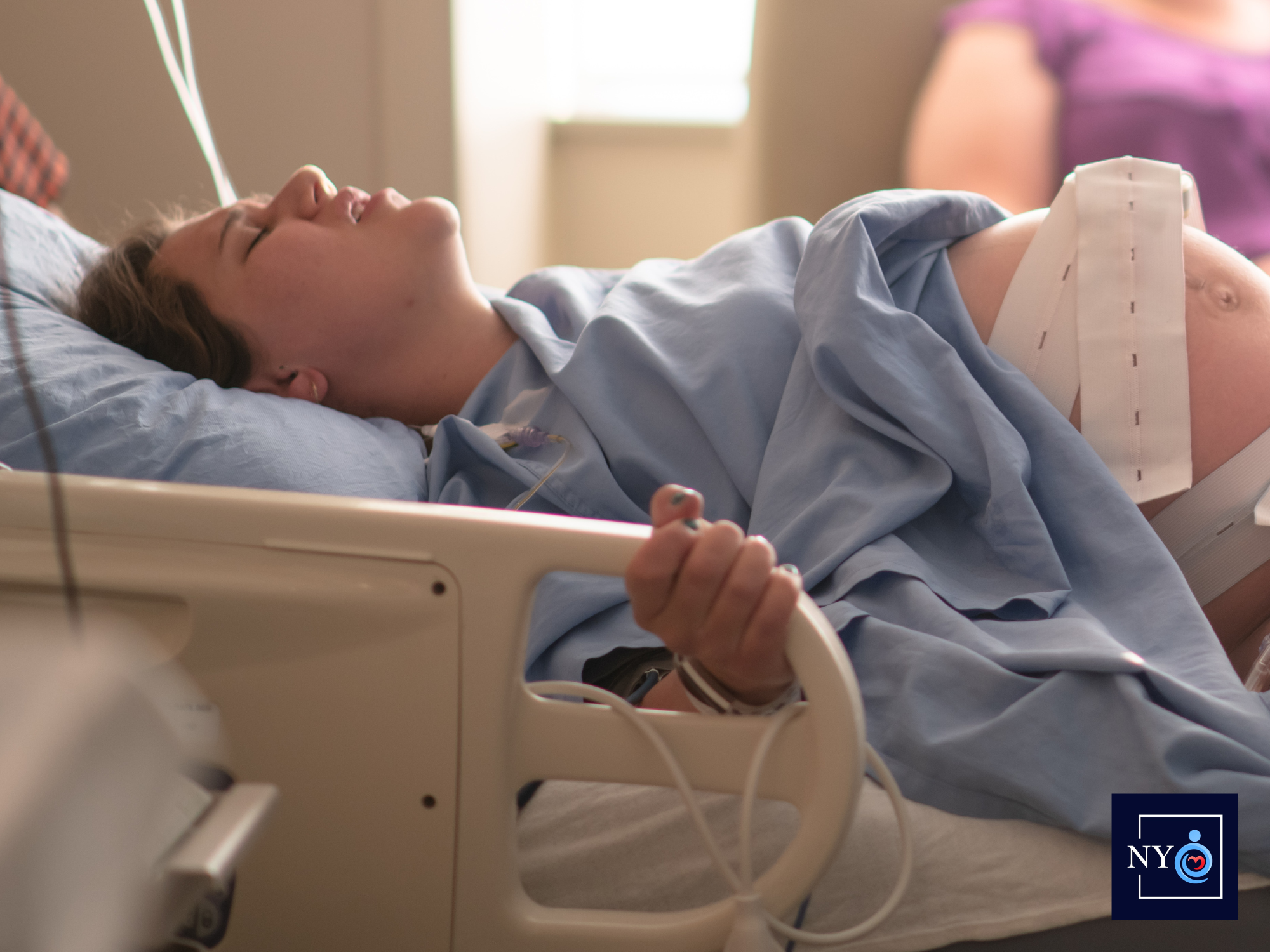A breech birth is when a baby is positioned feet or bottom first inside the mother’s womb, rather than the head being positioned downwards for a normal delivery. While some breech babies are born without any complications, it can pose significant risks to both the mother and the baby. In this article, we will discuss the dangers associated with breech births and what expectant mothers can do to avoid them.
One of the most significant dangers associated with a breech birth is that the umbilical cord, which supplies the baby with oxygen and nutrients, can become compressed, causing a lack of oxygen, which can lead to brain damage or death. This risk increases as the baby grows and occupies more space inside the womb. Additionally, breech deliveries can cause the baby to experience trauma during delivery. This is because the baby’s head is usually the last part to emerge, which means it is vulnerable to injury as it passes through the birth canal.
Breech births can also cause complications for the mother, such as prolonged labor, tears, and excessive bleeding. In some cases, a cesarean delivery may be necessary to ensure the safety of the mother and the baby. C-sections, however, come with their own risks and require a longer recovery time compared to vaginal deliveries.
Types of Breech Births
There are three types of breech presentations that can occur – a frank breech, a complete breech, and a footling breech. These types are categorized by the position in which the baby is coming out of the vaginal canal.
Frank Breech
A frank breech is a specific type of breech position in which a baby is positioned bottom-first in the uterus with its legs extended straight up in front of its body and feet near its head. In this position, the baby’s buttocks are the first to emerge from the birth canal during delivery instead of the head, which is the usual presentation.
Frank breech is one of the most common types of breech presentation and occurs in about 65% of breech births. It is considered a complete breech presentation because the baby’s knees are flexed and its feet are close to its buttocks, which make its buttocks the first part of the body to come out during delivery.
It’s important to note that a frank breech presentation does not necessarily mean that the delivery will be complicated or risky. However, it is associated with a slightly increased risk of certain birth complications compared to other breech presentations.
In a frank breech, there is a higher likelihood of the baby’s head getting trapped in the birth canal during delivery, a condition known as head entrapment. This can lead to oxygen deprivation in the baby and other complications. As a result, most doctors and midwives recommend that frank breech babies be delivered via cesarean section rather than vaginal birth, especially if the baby is large, premature, or has other risk factors for complications.
In some cases, a vaginal breech delivery may be considered, but only under specific circumstances and with careful monitoring by a skilled obstetrician. The doctor may try to rotate the baby using various techniques to attempt to deliver the baby’s head first. They may also use forceps or a vacuum to assist with the delivery.
During a frank breech delivery, the baby’s legs may emerge first and the body may deliver slowly, with the baby’s head remaining inside the birth canal until the very end. This is known as the “turtle sign” and is considered a sign of a potentially difficult delivery.
If a baby is found to be in a frank breech position late in pregnancy, doctors may attempt to manually turn the baby to a head-down position through a procedure called external cephalic version (ECV). ECV is a procedure in which a doctor applies pressure to the mother’s abdomen and attempts to rotate the baby to a head-down, or vertex, position. However, ECV is not always successful and may not be recommended in certain situations, such as if the baby is very large or if the mother has certain medical conditions.
Complete Breech
A complete breech, also known as a full breech, is a type of breech presentation that occurs when the baby is positioned in the uterus with their buttocks pointing downward and their legs folded at the knees so that their feet are near their buttocks. In this position, the baby’s head is the last part to be born.
During a complete breech birth, the baby’s buttocks are the first to pass through the birth canal, followed by their legs and feet, and then their torso and head. This position is considered a more complex type of breech presentation than a frank breech, which occurs when the baby’s legs are straight up in front of their body and their feet are near their head.
As with all breech presentations, a complete breech birth can pose certain risks to both the mother and the baby. The main concern is that the baby’s head may become trapped in the birth canal, which can cause the baby to become deprived of oxygen, leading to serious health complications or even death.
In some cases, a baby in a complete breech position may be delivered vaginally, but this is typically only done if the baby is not too large and the mother’s pelvis is adequate to allow for safe passage. However, most healthcare providers will recommend a cesarean section for complete breech births in order to avoid the risks associated with a vaginal delivery.
It’s important to note that a baby in a complete breech position may not be diagnosed until labor has already begun, which can make it more difficult to plan for a safe delivery. If a baby is found to be in a complete breech position during labor, the healthcare team will carefully monitor the situation and may decide to perform an emergency cesarean section if it appears that the baby is in distress.
In some cases, a healthcare provider may attempt to manually rotate the baby from a complete breech position to a head-down position, a procedure known as an external cephalic version. This can be a successful option for some babies, but it carries certain risks and is not appropriate for all cases.
Footling Breech
A footling breech is a type of breech presentation that occurs when the baby’s foot or feet are positioned to come out first through the birth canal instead of the buttocks. It is the rarest type of breech presentation and occurs in about 4% of all breech births.
There are two types of footling breech: single footling breech and double footling breech. In a single footling breech, one foot is positioned to come out first, while in a double footling breech, both feet are positioned to come out first. This type of breech presentation can be very dangerous and requires careful management to avoid injury to both the baby and the mother.
Footling breech can increase the risk of a number of complications during labor and delivery. These include prolapsed cord, which is a medical emergency that can occur when the umbilical cord drops into the birth canal before the baby and becomes compressed, leading to oxygen deprivation and potential brain damage or death. There is also a higher risk of umbilical cord compression, which can result in fetal distress and, in some cases, stillbirth.
In addition, footling breech increases the risk of a difficult delivery, which can lead to injuries to the baby or the mother. During delivery, the baby’s legs may become trapped or extended above its head, which can cause injury to the hips or knees. There is also a higher risk of head entrapment, where the baby’s head becomes trapped in the birth canal after the body has been delivered.
Due to the increased risk of complications associated with footling breech presentation, many doctors recommend that women with this type of breech presentation deliver via a planned cesarean section. A cesarean section is a surgical procedure that involves delivering the baby through an incision in the mother’s abdomen and uterus, which can help avoid the risks of a vaginal delivery.
In some cases, however, a vaginal delivery may still be possible. The decision to attempt a vaginal delivery in the case of a footling breech will depend on a number of factors, including the size and position of the baby, the mother’s health, and the experience of the delivery team.
Can a baby survive a breech birth?
Absolutely. A baby can survive a breech birth, and many babies do. OB/GYNs are trained on how to identify a breech birth (including which type it is) and how to immediately treat one. As discussed in the types of breech births, there are many ways in which a doctor can do this.
This is not to give you a false sense of security – a breech birth can be deadly to your baby, which is why your OB/GYN is trained to treat them. A breech baby that is not reoriented or aided in any way is at greater risk of birth injury or death than one that is helped by a doctor.
If your baby was a breech baby, and your doctor did not attempt to reorient the baby, perform a C-section, or otherwise remedy the situation, you and your child may have been victims of medical negligence.
If this is the case for you, fill out the contact form on this page to get in touch with an experienced birth injury lawyer. A birth injury lawyer can help you determine fault in your child’s birth injury and seek financial compensation for these injuries.
How can you prevent a breech birth?
While it is not always possible to prevent a breech birth, there are some steps that can be taken to reduce the likelihood of it occurring.
- Regular prenatal care: Regular prenatal care is essential to monitor the baby’s position as it grows. During prenatal visits, the doctor can identify if the baby is in a breech position and provide guidance on what to do next. There are some methods available that can help to turn the baby into a head-down position before delivery. These include exercises, such as pelvic tilts, or specific positions, such as the knee-to-chest position.
- Optimal fetal position: Encouraging optimal fetal positioning can help to prevent breech birth. This can be done by avoiding positions that may cause the baby to shift, such as sitting with your legs crossed or reclining on a couch or chair that is shaped like a bucket seat.
- Exercise: Staying active and exercising during pregnancy can help to maintain good posture, strengthen the pelvic floor muscles, and encourage optimal fetal positioning. It is important to talk to your healthcare provider before starting any exercise program.
- Chiropractic care: Chiropractic care can help to balance the pelvis and promote optimal fetal positioning. Some women find that regular chiropractic adjustments throughout pregnancy can help to prevent breech birth. However, New York Birth Injury does not necessarily encourage, nor discourage receiving chiropractic care, and this article should not be taken as an endorsement of chiropractic medicine in general. If you’re interested in pursuing this, talk to your OB/GYN or your primary care provider before scheduling an appointment with a chiropractor.
- External cephalic version: External cephalic version is a procedure that can be done to try and turn a breech baby. This involves using hands-on techniques to move the baby into a head-down position, as discussed under Types of Breech Births.
- Planned cesarean delivery: In some cases, a planned C-section may be recommended if a breech birth is likely to pose a risk to the mother or baby.
In conclusion, breech births can pose significant risks to both the mother and the baby. It is crucial for expectant mothers to receive regular prenatal care to identify a breech presentation early and take steps to avoid complications. In some cases, a cesarean delivery may be necessary to ensure a safe birth. With the help of a doctor and by taking the necessary precautions, mothers can increase their chances of having a safe delivery and a healthy baby.
Is a breech birth more painful?
Breech birth can be more challenging and may pose some additional risks compared to a vertex presentation birth, but the level of pain experienced during childbirth is subjective and varies greatly from mother to mother.
If you’re an expectant first-time mother, you may want to express concerns about breech birth with your OB/GYN in a prenatal visit. If you are already a mother and are expecting again, you may already have an understanding of what giving birth feels like to you (you may not if you were put under or received a C-section). If you are experiencing more pain than you did the first time or during previous labors, this may be a sign that you are experiencing a breech birth or some other complication. Communicate this with your doctor if you experience abnormal amounts of pain during labor.





